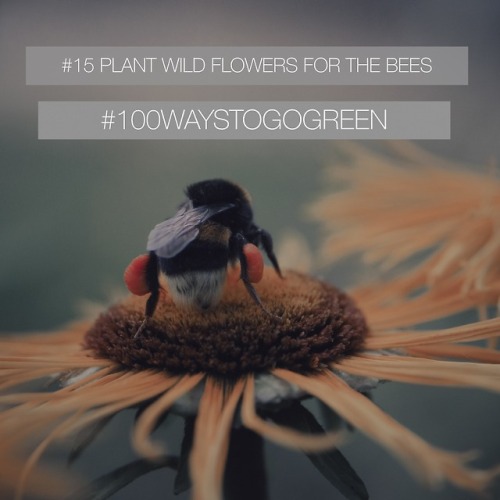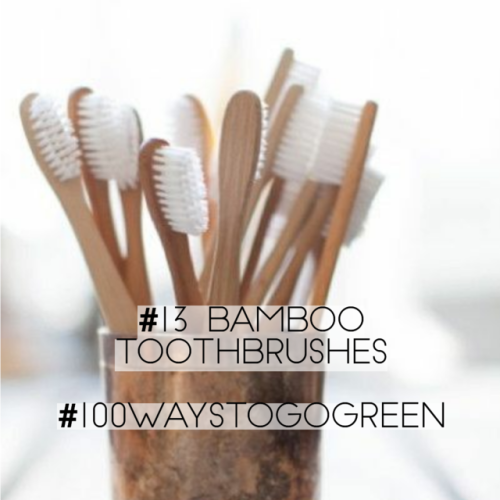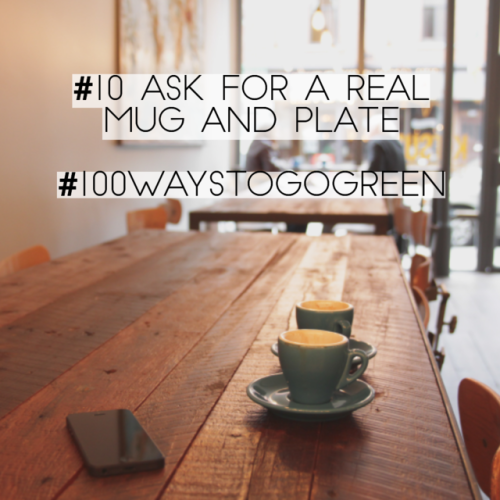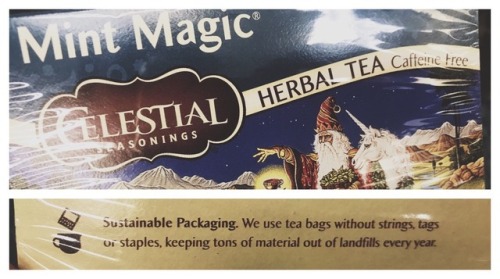#going green
#15 plant wildflowers
The bees, especially those living in the wild are in trouble. They don’t find enough blossoms to collect pollen and nectar from in urban areas. Help them by throwing seedbombs with wildflower seeds everywhere in town!
Post link
#14 turn all the lights off
Especially today, it is literally about turning all your lights off. It’s earth hour at 8.30 pm your local time. Living in the dark for one hour is a message that you care about our planet. But turning everything off you don’t need at the moment is something important every day. So much energy is wasted by tv’s nobody’s looking at or lights in rooms with no one in it.
Post link
#13 bamboo toothbrushes
Bamboo grows very fast, so it is the perfect material for an item that needs to be replaced every three month. Unlike plastic. A plastic toothbrush is used for a couple of weeks and then stays on this planet for several hundred years, since it will not biodegrade. That makes no sense. Switch to bamboo. Plus: You can just burry the old brushes in the backyard.
Post link
#12 renewable energy
Not everybody has the chance to, but if you have the option to change your power supplier, do so. It might seem obvious, but people underestimate the power we have. We can vote with our dollars for the world we want to live in. Also, check what company is behind the green power supplier of your choice and try to find one who is not part of a big coal or fracking company.
Post link
#11 bring your own cutlery
This is an easy one: Carry around a set of cutlery in your everyday bag. You can use an outdoor camping set or just go with your normal forks, spoons or sticks. Whenever your eating out anywhere in a place that doesn’t offer reusable cutlery, just use your own and skip the plastic. You can just put them in the dishwasher when you are back home and save a ton of plastic.
Post link
warning: rant
I’m hearing a lot about sustainability and going green and supporting local, but most of the information is USA/large agricultural country centric. as a very average singaporean i, i can’t think of any ways to do that
in terms of food…
99% of all our food is imported because the land area is too small to sustain an effective % of the population. local produce is simply too expensive to completely switch over unless the family earns a lot how do we reduce our carbon footprint like this?
recycling…
there are many blue bins for recycling but irresponsible people are always throwing their food waste and rubbish inside and it results in the entire bin being thrown away so it’s a waste of water and time. especially in residential areas.
i feel schools should do more for paper recycling since they’re probably the largest users of paper and not able to be fully digital yet. they could encourage recycling amongst students like P2/P4/P6/Sec 2/Sec 4/JC 2 after EOY/National Exams because honestly they don’t really need their materials anymore as they move up to the next year. I’m sure the mountains of used assessment books and worksheets could be diverted from the incinerator while textbooks in good condition should be passed down to those who can’t keep affording brand new ones. I understand that NTUC has a textbook initiative but hardly anyone would take serious note unless they were already interested. by converting this programme to the individual school level, it would be easier for students to hear about and take part in since the entire programme is within school premises anyways. if manpower is needed to sort/promote/quality check, an additional VIA project wouldn’t hurt interested students/student leaders anyway
plastic-free shopping…
our rubbish disposal system requires all rubbish to be neatly tied up in plastic bags. we NEED plastic bags to make the rubbish disposal process easier. wet food items like meat need to be kept fresh with plastic bags. wet market and hawker centre shop owners rarely stop for us to switch to reusable containers when there’s business. in supermarkets, fresh produce that doesn’t actually require bagging is still put in bags to buy as a bunch (e.g cabbage, apples, bananas). nowadays supermarkets make their plastic bags super thin to ‘reduce’ plastic waste but it means that the bags can serve their purpose at the bare minimum. it breaks so easily its ridiculous. that also means that cashiers double or triple bag, which defeats the original purpose anyways. requiring customers to pay for plastic bags hinders no one but lower income households, who aren’t the main problem anyway.
Shugar Soapwork Review - 3.5/5
I discovered this brand when I purchased a bar of soap at the Dollar Tree! I needed a bar of soap for the shower and the first thing that caught my eye about this brand was that the box was not wrapped in plastic. Upon checking the back of the box, I decided that this would be a good quick buy that seemed to match up to the lifestyle I’m trying to follow. Upon further inspection, my quick buy seems to have been an excellent pick for buying a sustainable product on a budget. Here’s more about the brand, Shugar Soapwork:
- Cruelty Free - 1 pt. This brand is cruelty free! However, I have not found anything stating whether or not they search specifically for cruelty free suppliers.
- Sustainability - 0.5 pt. The soaps are packaged very simply, in a recyclable cardboard box with nothing else. I only gave them half a point for this category because although they can be recycled, they do not indicate whether or not the box is made of recycled materials. They do state on their website that where possible, they use recycled materials within their company but do not elaborate.
- Ingredients - 1 pt. This brand is vegan! The ingredients they put in their soaps do not include artificial colors, animal products, preservatives or chemicals or petrochemicals and are sustainably sourced. They do utilize palm oil, however they only used RSPO certified palm oil from sustainably grown sources, meaning they have little to no impact on the environment.
- Sources - 0.5 pt. Where they purchase their ingredients is not detailed on the website. I’ve awarded half a point because they make it a point to clearly state that the palm oil they use is certified sustainable. They also state that they operate during off-peak hours to lighten the load on the grid system, so they are doing things to make sure not only are their products kind to the environment, but their daily operations are too.
- Ethics - 0.5 pt. Technically, going by what I originally stated would be the requirement for the ethics portion of company reviews, Shugar Soapwork shouldn’t receive any points for this, as they are not overtly involved in the sustainable community. However, they do donate to a variety of charities working to improve the livelihood of others, including charities for victims of domestic violence, those who are homeless, veterans, and many others.
Notable negatives - Shugar Soapworks does not offer a lot of traceable information on their website. There is also no way to order these through the company website. If you want to purchase these online, you must go through the Dollar Tree website.
Notable positives - These soaps are sold in the Dollar Tree, Dollar General, and the 99 Cent Stores! This is by far the cheapest sustainable product I have found. There’s also a variety of scents available so there should be one for everyone, meaning you can easily switch to this brand.
Company Reviewing and Ranking
In the interest of making it as easy as possible for others to find the products that work best for them and align with a sustainable lifestyle, I’ll be reviewing and ranking companies based on the following categories:
- Cruelty Free - are the products tested on animals?
- Sustainability - are the products packaged sustainably?
- Ingredients - are the ingredients natural?
- Sources - are the sources responsible?
- Ethics - does the company endorse sustainability/environmentally friendly attitudes outside of their own company?
I will rank companies based on these five categories. Companies will get either a full point or half a point and have a ranking out of five. They might receive a special mention or an extra point if they check off a requirement that is not on the above list. I’ll still do individual product reviews, but these will be to help point you in the right direction to companies and products you can love guilt free.
#6 - Into the Kitchen
At first, my primary focus on changing was in the bathroom with my hygiene routine. I’m still working on that, but since I’ve become accustomed to trying different things and keeping track of it all, I’ve expanded my reach into the kitchen as well. I don’t remember the last time I purchased a bottle of water, as I started using reusable ones a while back, long before I started this blog. However, since I started in on this journey, I’ve also cut out everything else that’s in a plastic bottle. I can’t tell you how badly I’d like a Gatorade some days!! But those are bottle-only so the last time I tasted one was months ago when I snuck some of my brother’s that he left on the kitchen table. If I feel like a Sprite, I’ll get it in a can and while I guzzle Arizona Green Teas from time to time I’ve had it out of a bottle twice max in the past ten years. I also recently bought metal straws because (confession time) I am a weak human being and absolutely love boba tea so when I get it I have it with a straw because I take it on the go and can’t really open the lid and eat the boba with a spoon if I’m trying to walk around or get work done with it. But now I have a reusable one big enough to fit the boba so those days are over. I also have to see if they’re willing to put it in my cup instead of in the single-use plastic ones. If not, it pains me to no end to say this but I’ll have to cut out boba. I’ve also cut out a lot of things that come individually wrapped. There are some days I’m dying for a cookies n cream granola bar for breakfast but they’re so wasteful and regardless of how badly I want berries, I refuse to buy them at the store because of the neat little plastic containers they come in. It might not be a big difference, but I’ve also stopped eating candy that comes wrapped individually. I’ve switched to the boxed candy you can buy for a dollar, and only the kind that does not come in a plastic bag or with the box wrapped in plastic but I know I’ll have to stop even that soon enough. I still buy corn dogs, which I don’t like doing because they come in a big ol cardboard box with a thin plastic bag inside but it really helps me ensure I actually have something to eat because there are some days where I have nothing in the house and just can’t afford to go to the store to purchase something. It’s mostly a matter of finding a balance between what I want to eat, what I can afford, and what’s easiest on the environment.
Bamboo: Your New Love
Let’s take a moment and talk about how wonderful bamboo is! There are over 1500 types of bamboo that can be found on every almost continent. It can be used in endless ways, including in medicine, architecture, house hold objects, and food! It is extremely low maintenance to grow (so low it generally doesn’t even require fertilizer) and in the right conditions, can grow three feet (0.91 meters) or more in one day and reach maturity within five years. It also releases 30% more oxygen than other plants - that goes without saying it also absorbs more carbon dioxide than other plants. Despite being a plant, bamboo is stronger than steel and can even hold up better than concrete. Unlike concrete, bamboo is naturally antibacterial, meaning items made of bamboo can naturally prevent or kill 70% more bacteria than an object made out of another material. These aren’t even all the amazing things bamboo does! Check out the source for more about what else bamboo does. Of course, on top of all this, bamboo looks fantastic in any home and its compostability means that you don’t have to feel guilty about wanting to buy a new item.
Electricity, Electricity
My siblings and I grew up with our mom telling us we needed to turn lights off to ‘save electricity.’ The primary reason behind this was to reduce our electric bill every month. But did you know that by saving electricity, you also save other resources, such as water? By reducing the amount of electricity you use, you also reduce your use of the resources required to create it. Here are some ways you can reduce your electricity use, carbon footprint, and your monthly bill!
- Turn lights off when you’re not using them. Don’t leave lights on in another room because you’re ‘coming right back.’ It takes almost no effort to flip a switch so you might as well turn it off as you leave the room.
- Unplug things when they are not in use. Even though your charger isn’t charging your phone, it’s still connected to the current, and is basically sending electricity nowhere. This raises your bill and your carbon footprint. (I had a lot of trouble starting this habit, but that was because the outlet I used most often was in a really inconvenient place. Once I found a better placed outlet, I plugged my items into a power strip and now I just unplug the power strip before I leave the room.
- Buy energy-saving lightbulbs and invest in power-saving appliances, if you can.
- Dry your clothes on a line, rather than using a dryer.
- Don’t leave your electronics plugged in all night. If you have the time, charge your phone/tablet/device before you go to bed and then unplug it. Leaving these items plugged in all night is bad for the battery anyways (it reduces the life of the battery much faster than unplugging it once it’s fully charged).
- Open your windows and change your thermostat. If the weather’s nice, ditch the AC! If not, then raise your thermostat by two degrees in the summer and lower it by two degrees in the winter from what you normally use it at. Your AC will turn on less often and won’t have to work for as long.
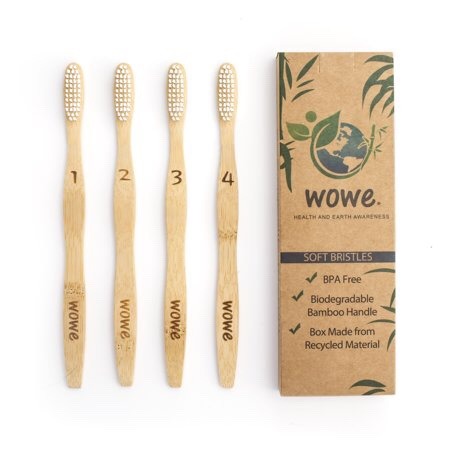
I switched to a bamboo toothbrush a couple months ago, once my regular plastic Colgate toothbrush was at the end of its life. I discovered bamboo toothbrushes from Instagram ads and I’m glad I did. Before I started this journey, there were things that I didn’t like using and didn’t like throwing away but toothbrushes were never something I thought twice about, since it’s a hygienic item. However, they are made of plastics which don’t decompose for hundreds or thousands of years, depending on the surrounding conditions. Here are the details on them:
- Form: These toothbrushes are made of bamboo and nylon bristles. The bamboo, when composted properly, can decompose in 6 months. Unfortunately, the bristles are not biodegradable. They should be removed before composting the handle. The brushes are also fairly straight as opposed to other plastic ones that tend to curve for a more comfortable grip.
- Price: On Amazon, it is $12 for a pack of 4. This is $4 more than the toothbrushes I normally get. It’s not a big difference though, considering one pack lasts a single person an entire year. It is a little frustrating because I have not been able to find these in a store, only available to order online.
- Fragrance: Not applicable, it’s a toothbrush!
- Packaging: This brand packages the four toothbrushes in individual boxes, inside a larger box. The boxes are made from recycled material and are themselves recyclable. They also do not feature a plastic window, while some other brands do.
- Use: Before switching, I used curved toothbrushes so this was a little weird to switch to but I was accustomed to it within just a few days. It wasn’t uncomfortable, just different. Other people have written reviews saying their brushes had bristles fall out. I purchased a four pack and gave one to each person in my family and the only issue anyone has had was a single bristle (not a clump of them) on my mom’s brush fell out, but she also brushes pretty intensely. I haven’t noticed a difference in my dental hygiene since switching.
I will say it’s a little disappointing to know that the bristles on this are not biodegradable, but through my research I’ve found that so far the only biodegradable alternative are bristles made from pig or boar hair, which I don’t think I could get on board with. I’m going to try and come up with a use for the bristles but I don’t think I’ll have any good ideas for a while. It is nice to be reminded twice a day that I’m making a difference, even by something as simple as changing my tooth brushing implement.
Greenwash: misleading information presented by an organization to appear more environmentally responsible than they actually are
Although you may not look for these terms as much as the others, these are still important to understand which is which. Knowing the difference will allow you to buy from companies that meet your ethical standards with ease.
Clean vs.Nontoxic vs. Organic
Cleanrefers to ingredients that are not harmful to your health.
Nontoxicrefers to ingredients that are not harmful to your health or the environment.
Organicrefers to products that are produced with all natural ingredients, without synthetic chemicals that may have been deemed safe.
Ethical vs. Fair Trade vs. Artisan
Ethicaldescribes appropriate working conditions and employees that are paid fairly for their work by multinational companies.
Fair trade describes the movement ensuring producers abroad receive fair compensation for their work and products.
Artisandescribes products that are handmade, with minimal automation by skilled workers in developing countries.
**It is important to note that although a product can claim to be any of the above, these are not binding terms. The best thing to do is to look for products that are certified by a third party.
There are so many terms that show up on green product labels, you might assume that they all mean pretty much the same thing. However, this would be incorrect. Each term indicates something different about the product you’re buying. Here’s the differentiations between the most common ones you might look for:
Green vs. Eco-friendly vs. Sustainable
Greenapplies to anything that benefits the environment in some way.
Eco-friendly applies to products that don’t harm the planet.
Sustainableis much more specific. It applies to products that do not use a lot of resources (including water, energy, and whatever the product is actually made of) during production and do not create a lot of pollution after disposal.
Cruelty Free vs. Vegetarian vs. Vegan
Cruelty Free means that the ingredients or products have not been tested on animals.
Vegetarian means that a product does not contain animal products but it may contain animal byproducts, such as milk, honey, and other ingredients.
Vegan means that the product does not contain any animal products or byproducts.
**It is important to note that although a product can claim to be any of the above, these are not binding terms. The best thing to do is to look for products that are certified by a third party.
Not trying to scare you, but I think it would be good to know:
- Plastic takes up to 1,000 years to degrade in a landfill.
- Recycling plastic takes 88% less energy than making plastic from raw materials.
- Enough plastic is thrown away each year to circle the Earth four times.
- Americans throw away 35 billion plastic bottles every year.
- Only about 25% of the plastic produced in the U.S. is recycled.
- If we recycled the other 75% we could save 1 billion gallons of oil and 44 million cubic yards of landfill space annually.
- Using aluminum or glass containers is always preferable over plastic.
- A plastic bottle of drinking water contains on average 4 cents worth of water.
So many things nowadays come in packages when they don’t have to, like spices, nuts, fruits, and vegetables. A lot of organic stores like Sprouts and Trader Joe’s offer some of these items in bulk, though they usually provide plastic bags for you to use when shopping there. A good way to reduce the amount of packing you have to throw away without limiting what you can eat is buying in bulk. You can go to these shops and bring your own reusable, resealable bags to use and then bring them back again when you need to purchase more. You could also bring the containers you store them in, but depending what you are using that might just be too heavy. If your local grocery stores don’t offer a lot in bulk and you are unsure where else you can go to purchase things in bulk, check out these websites below:
Litterless - allows you to search by state
Zero Waste Nerd - has a list of bulk stores organized by state
Bamboo Cotton Swab Review
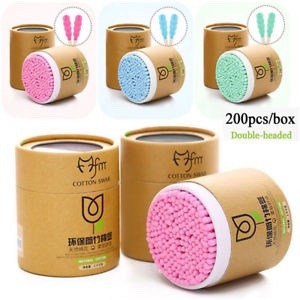
In one of my personal posts a while back, I wrote that I had given up buying cotton swabs because of the large plastic container they come in. While that was what I intended to do, I just couldn’t do it. My ears need a cleaning deeper than the corner of my towels can give! But I wasn’t about to cave and just buy a plastic pack of them. I ended up finding these, the case of which is cardboard, which I was super excited about. Once I got them though, I realized I wouldn’t be purchasing them again. Check out why:
- Form: So these are cotton buds connected by bamboo instead of plastic or cardboard. They come in five different colors and also in different shapes. The ones I purchased were pink and shaped kind of in three sections. The cotton is packed on a little lighter than the common Q-Tips brand.
- Price: I paid about $6 total for a 200 count pack, which is 3x more than I would normally pay for a pack of 500.
- Fragrance: These have no fragrance.
- Packaging: The whole reason I decided on these was for the packaging. They are described as being wrapped in cardboard. And that’s true, the cute brown container they come in is cardboard, but (and this is my fault for overlooking this in the pictures) the circle on top is not simply a hole, its a plastic window. Furthermore, when this arrived in the mail, it was wrapped in a layer of thin foam as well as a large plastic bag. I purchased mine off eBay, which I assume is straight from the source because it was from a seller based in Shiang Hai, and the characters are Mandarin. I know that it is possible to find these on Etsy as well (at a higher price), but I will not be trying those because IF they don’t come with all the extra wrapping, what’s likely happening is that the Etsy sellers are purchasing these in bulk, foam and plastic wrapped, then discarding that wrapping before shipping them off to make their customers feel as if their purchase was low waste.
- Use: I like these just as much as the Q-tips brand cotton swabs. They work great for cleaning ears or removing small bits of makeup. Since the cotton is wrapped lighter, it is a little harder on the skin but it’s not uncomfortable.
I was really disappointed with these as soon as I opened the package. The extra packaging essentially cancelled out the fact that these use bamboo and cardboard. I’ve been using these sparingly, just once in a while when I’m really in need so to stretch the time before I’m on the hunt for another kind to try. Although really, I should ditch cotton swabs altogether because cotton is not exactly an environmentally friendly plant. But that’s for another post.

Soo fake nails are definitely not #zerowaste but my roommate (who is not on a waste reducing journey) bought some and the extras that don’t fit her do fit me. So instead of going straight to the trash unused, they’re on me and now I’m wondering what the best way to dispose of them is. they’re made of ABS plastic with polyacrylic acid and ethylhexyl acrylate adhesive. I feel like they’re probably too small to just take to the recycling center.. Any suggestions?
Eco WEDDINGS
Here are some ideas:
- Give tree as a present. Just kidding. But really potted succulents make great surprise gifts that also spreads photosynthesis.
- Be modern and use e-invites. Or get some recycled paper, it has a nice feeling to it.
- Don’t use disposable ware. Think compostable.
If you have any more inspiration strikes, comment. I would love to read them.
also check my eco-wedding decor: etsy shop
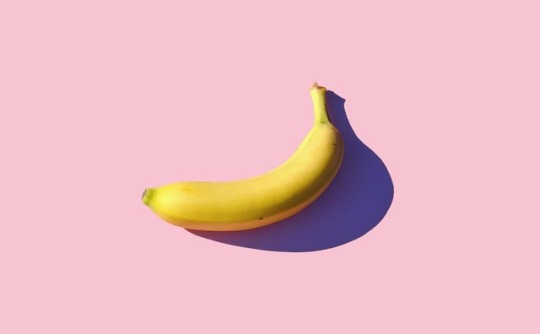
Help reduce produce waste by buying individual bananas at the store! Most single ones get overlooked in favor of bunches so buying the singles and doubles will get them off the rack before they start going bad and get tossed. Plus you can pick the ones without a sticker!
Avocado Co-Wash Bar Review

So a little while back I purchased the Avocado Co-Wash Conditioner Bar from Lush. When I was finally rid of all of my bottled conditioner, I was super excited to try it, but it didn’t quite live up to my expectations. But don’t let that discourage you from trying this bar! Here are the details on it:
- Form:I read somewhere that since this is a co-wash it is 80% conditioner and 20% shampoo so this bar had a little bit of lather, but not much (after all, what conditioner lathers?). Bonus: this is a co-wash so you don’t technically need to use shampoo any longer which saves you money. It looks exactly like the above picture and is sliced like a piece of cake. The green is a little soft if you press on it, and gets softer when wet while the red, as far as I could tell, is wax which doesn’t melt away unless you spend ages rubbing it between your hands. This is probably to help it hold up better in the shower. This bar is made primarily of natural ingredients, although it does contain some ‘safe synthetics’ including sulfates and fragrance. The full list of ingredients can be found on the product page of Lush, and you can click on any ingredient you’re not familiar with to learn more about what it is and why they use it.
- Price vs Amount: I paid $11 for 0.16 pounds which is basically a palm sized piece on the smaller side. If your hair is half as thick as mine, I wouldn’t imagine you having any problems using it for a good while.
- Fragrance:This smells exactly like Pez. Personally, I absolutely loved it because I came to terms long ago that anything I used for my hair would smell like coconuts. The smell was very strong, my sister could smell it from downstairs while I was showering upstairs and I could still catch the smell on my hair two days later.
- Packaging: When I purchased this, it came wrapped in 100% recyclable/biodegradable paper with a paper price sticker.
- Use: At first, I tried using this to aid in brushing through my hair like I normally do with conditioner but I didn’t feel like it was working the best it could, so I switched to brushing my hair without it and letting it soak on my hair while I finished the rest of my shower. This worked better so I continued like this for about a week. At that point, however, I couldn’t deny that my hair wasn’t getting as much moisture as it needs so I used the whole remaining half of the bar all at once to see if maybe I just wasn’t using enough. It was better than when I was using reasonable portions but it still didn’t hydrate my hair like I was hoping
Overall, if you’re looking for a conditioner bar and don’t mind strong smells I would definitely recommend giving this one a try. My review may not sound all that favorable for how well it actually worked but keep in mind that my hair needs a LOT of moisture. It’s super thick with 3C/4A type curls. When I wear it down, it’s pretty much an afro. I’ve always gone for things formulated specifically for curly hair because anything else, even if it contains coconut (like the Herbal Essences Hello Hydration duo) it just doesn’t do it for my hair. I could tell the bar was trying, so if my hair wasn’t so thick, I think it would’ve worked amazingly. Other girls I’ve talked to that have tried this absolutely love it, and their hair is still thick and wavy. If you want to try this, head into Lush and ask for a sample! They’re usually pretty open about letting customers try products before purchasing them. If you do decide to go ahead and purchase this but don’t like it, Lush is also generally pretty forgiving and will let you return it to them, even used.

Treat the planet as nice as your partner (or yourself!) this valentines
Nut Milk
I wrote this whole post then hit the escape button on accident so this may be of lower quality than before sorry :(
Cows are responsible for a disproportionate amount of methane and CO2 gasses that contribute to global warming. These being the facts, it is no wonder that more and more of the environmentally conscious are embracing veganism as well. One change you can easily make is the milk you drink! Some of the most common alternatives to traditional cow’s milk are almond, oat, cashew, and rice milks. While these don’t contain as much protein as cow’s milk, they are generally lower in calorie count and better for your overall health. This is particularly true because cows nowadays are often injected with hormones and steroids, which we ingest through the milk. By switching away from cow’s milk, you can avoid this (and keep them out of your childrens’ systems!!). You can also make your own substitution milks, so that it will contain the most basic ingredients, be almost entirely zero waste, and from what I’ve found, it can even be cheaper than what you might purchase in the store. I’ve been drinking almond milk for four months now and I love it! I’ll use my roommate’s regular milk on occasion but I’ve always had trouble drinking cow’s milk straight and now it’s even more true, because I love the taste of almond milk and the cow’s milk now to my palette has a bit of an animal-y taste to it, the same way that goat’s cheese does.
Know Your Labels - Vegan
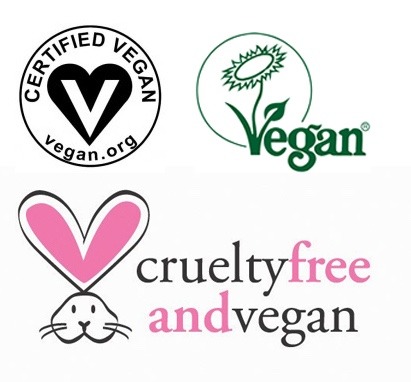
Although you may not be vegan, you should consider using vegan products. They are natural and tend not to contain harmful chemicals and synthetics that can harm you or the environment or utilize an abundance of resources to create!
Depending on where you are, the labels on your products might look different. The three above logos are the most common ones used to confirm that the items you are buying are certified vegan. The above logos are identifiers of certified, third party organizations that companies have asked to verify their products. Any other logo that certifies a product as vegan may be false, planted by the company with the intent of deceiving consumers. Here’s what you should know about them:
Vegan Action (top left): Requires companies to provide signed statements by the manufacturer with documents proving they are vegan. This organization does not test or monitor products, meaning this is based on the company and manufacturer’s honesty.
Vegan Society (top right): Companies provide signed statements by the manufacturer with documents to prove they are vegan. This organization also does not require testing or monitoring, so this is also based on the honesty of the company and manufacturer being certified.
PETA (bottom): This label certifies that a product is both cruelty free and vegan. To be certified, companies complete a short questionnaire and provide a statement of assurance. Once again, no testing or monitoring is performed, so these companies are certified based on their honesty.
(Source)
Brush with Bamboo Review

This is the second brand of bamboo toothbrush I have used and although I am used to the straight back that is standard for bamboo toothbrushes, something about the way the bristles are placed on this one made it slightly uncomfortable in my mouth.
- Form: This toothbrushes is made of bamboo and nylon bristles. The bamboo can be composted but unfortunately, the bristles are not biodegradable. They should be removed before composting the handle. As you can see, this backside of the handle is straight, rather than curved like many plastic toothbrushes.
- Price: I purchased one of these individually, for $5. You can buy 4 for $20 on their website. This is $12 more than what I would normally pay for a pack of 4 plastic toothbrushes.
- Fragrance: Not applicable, it’s a toothbrush!
- Packaging: When I ordered this, I did not see a picture of how it came, so I was pretty unhappy to find that it came with plastic wrapping in the window of the box. The box itself is recycled material and there is no extra packaging inside the box.
- Use: After adjusting to this brush, I realized why I was not as fond of this one as the first one I tried. Personally, i thought the brush part just felt too big in my mouth. It did eventually stop bothering me but it took a little longer to adjust to than it did to the straight back of these kinds of toothbrushes.
Overall, this wasn’t a bad toothbrush. The fact that the brush felt a little larger to me isn’t a deal breaker, but I did find it a little more expensive than the first I tried and the fact that it has a plastic window in the box means that I won’t be purchasing it again.
Staying Aware
I don’t know how you found this blog, but my guess is that since you found it you’re interested in sustainable living on some level. Regardless of where you are in your journey, and especially if you haven’t started or you’re not sure if you want to, I’d like you to take a moment and look around you. Open your bathroom cabinets, your kitchen cabinets, just look around your bedroom and think about what you see. If I had to hazard a guess, I’d say in your bathroom you have toothpaste, a toothbrush, shampoo, conditioner, body soap, a razor, shaving cream, hand soap, perfume, lotion, contact solution, face wash, sunscreen, hair gel, mouthwash, and makeup remover. Some of you will have more products than these and some of you will have less, but I’d say these are the common items most people will have. Most of these come in plastic containers. In the kitchen, I’m sure you have containers of juice, milk, condiments, fruit and vegetables in plastic bags, saran wrapped meats and granola bars nicely wrapped up. These things are also all in plastic, whether bulky or thin. That’s just two of the rooms in your house. Now, don’t think I’m trying to make you feel bad. Consuming things is in our nature and marketing has long targeted us to make us believe we need more things than we do. I simply would like you to be aware of how much you have in your house, how much of it will be around long after you are gone. If you can remember that once in a while, making sustainable changes should be that much easier.
I was searching for a spearmint tea after hearing a tip that spearmint is good for your skin. It was tough to track anything down in my local grocery stores, but this box of Celestial Seasonings tea was one of only a few teas I found with a blend that included spearmint leaves. (Couldn’t even find anything in bulk.)
In the spirit of looking for environmentally-friendly options, I wanted to see if the tea packaging for this brand would be recyclable, but I came across a quote on the back of the box that struck me as odd: “Sustainable Packaging. We use tea bags without strings, tags, or staples, keeping tons of material out of landfills every year.”
Upon first read, that sounds great, right? But it didn’t answer my question: can I recycle the packaging and compost the tea bags? The answer would determine my purchasing the object or not, yet the box made no clear note of it.
That leads me to my ultimate question: Why can’t companies make it more transparent whether or not their products are recyclable? Nowhere on this box could I find out whether or not the packaging or bags could be recycled or composted.
The more I dig into going zero waste, the more I find myself standing in the grocery store study packaging to look for recycling instructions. It’d be nice to see a standardized (and required) line or symbol indicating the recyclability of the packaging and its components — both for my convenience and the sake of the recycling center in town. In my mind, it makes just as much sense as putting the nutrition label on the box.
You’ll see on plastics the number indicating which type of recyclable plastic it is, but often almond milk cartons, produce containers, and box packaging, for example, don’t mention anything and I’m left to guess whether or not the packaging can in fact be recycled.
Shouldn’t companies have an obligation to fully inform their consumers not just what they’re consuming in terms of the food, but the packaging that comes with it?
For the record, I found out later from the company’s website that the box and the tea bags are able to be recycled and composted. But because I couldn’t find it on the box while I was staring at a wall of tea options, I made the in-store decision to go with the box of tea that was more expensive, but was up front about the recyclability of the packaging and tea bags.
Considering the tea I went with and the tea pictured had the same recycling/composting ability, this would’ve been an easy win for the less expensive Celestial Seasonings, if only they’d just included a single line with the information I needed. The same rule applies beyond tea boxes — and man, would it save me so much time in the grocery store.
Do any of you have thoughts on a standardized recyclability index for food packaging? Is there something I’ve missed? My ears (and asks) are open!
Post link
There are a lot of reasons to go green and do your part to preserve the environment, but sometimes you don’t have to look far to find them.
Post link
We have produced about 8.3 billion metric tons of plastic since its invention. Of that, about 79 percent of plastic waste is not recycled or burned — just left to sit in landfills or our oceans.
This is a massive health risk for humans and a deadly hazard for animals who think plastic waste is food, not to mention the broader environmental impacts. And yet, the solution may not be to ban plastic outright — it’s complicated.
Source: Kurzgesagt
#13 bamboo toothbrushes
Bamboo grows very fast, so it is the perfect material for an item that needs to be replaced every three month. Unlike plastic. A plastic toothbrush is used for a couple of weeks and then stays on this planet for several hundred years, since it will not biodegrade. That makes no sense. Switch to bamboo. Plus: You can just burry the old brushes in the backyard.
Before I reblog, I always do a little fact-checking and research first to make sure I’m not disseminating inaccurate information.
I found the above post to be a bit misleading. It says you can “just burry (sic) the old brushes in the backyard,” seemingly implying that the entire brush is biodegradable.
This isn’t the case. While it’s certainly a good step to buy a bamboo brush rather than a landfill-destined plastic brush, even a bamboo brush isn’t fully biodegradable.
I found that currently, no one has been able to create toothbrushes that are fully biodegradable because the bristles are typically made of some inorganic material like nylon — unless they use boar bristles. This doesn’t necessarily make boar bristle brushes the go-to option: some people who use these types of brushes complain of an odor, in addition to the fact that these brushes may not be considered vegan since they’re made with a hair harvested from an animal.
Within the realm of bamboo brushes, one of the seemingly best options is made by a company called Brush With Bamboo. According to their website, the bristles of their sustainably-made brushes are made with 62% castor bean oil and 38% nylon, rendering them “biobased, but still not biodegradable,” since nylon doesn’t decompose.
So if you bury your bamboo brush, sure, most of it will decompose. But the bristles won’t. In fact, most bamboo brush companies advise you to tweeze out the bristles before attempting to compost.
Sure, the bristles are small and seemingly insignificant, but you should know what you’re getting into before telling all your friends you’ve got a fully biodegradable toothbrush graveyard buried in your garden.
I’d be remiss not to include that there is one option, and it’s been around for centuries: the neem chew stick. It’s the only truly biodegradable option, since it’s made from a neem plant and is a literal stick. It’s exactly what it sounds like. To use it, you chew on the end of the stick until it frays into bristles, then you brush.
The downside? You have to chew your toothbrush down before you can use it. And when it comes to brushing your teeth, the more inconvenient it is, the less likely you are to do it. And one thing I really want to emphasize on my own blog is making more sustainable choices easier, not harder.
Until someone creates the perfect toothbrush — ergonomic, wallet-friendly, biodegradable, and not made from pig hair — it looks like the best option on the market is a bamboo brush. Just make sure to tweeze out those bristles before you toss them in the dirt.
Have you seen any other notable sustainably-made or biodegradable toothbrushes? My ears (and asks) are open.
Post link
Can’t help but think about how nice it would be if we all were raised up sustainably, valuing the objects we consume and use from the jump. Growing up then trying to unlearn wasteful habits is hard — and if you think about it, backward.
Before I get too far along in documenting my journey to live sustainably, I’d like to talk a little more about the concept of a “no waste” (or “zero waste”) lifestyle.
The first real exposure I had to the concept was when I heard about an NYU student who could fit all of her trash in a mason jar. I vaguely remember reading news articles about her, but at the time didn’t give her much thought other than thinking how hard it must be to live like that.
A few years later, I watched a TED talk by Lauren Singer — the same person I’d read about previously. I considered a no waste lifestyle with a little more interest this time around.
And now, finally, in 2018, the message is finally resonating with me. I rewatched her TED talk this year when I started thinking more about going no waste.
Essentially, the no waste lifestyle just means you aren’t contributing trash to a landfill. The way Lauren practices, and the way I aspire to practice, however, allows for recyclables and compost.
This is an important clause. After all, most of us don’t live directly off the land, so buying the food you need to live a healthy lifestyle will involve some packaged goods. But if you are conscientious about the packaged goods you buy and make sure they are recyclable, you’re still offsetting (albeit not eliminating) your impact on the environment.
Since that TED talk, Lauren’s Instagram shows that her mason jar has gotten a little more full, but all her trash over the past five years still fits in that 16 ounce container.
I’m still a ways away from carrying around a mason jar of my own trash, but I hope to transition to that possibility as quickly as my current lifestyle allows.
If you have a second, I’d highly recommend checking out Lauren’s website at http://trashisfortossers.com/. It’s got a ton of helpful resources, which I plan to consult frequently.
You can also check out the website of Bea Johnson, who Lauren references on her blog. Bea has been in the waste-free lifestyle game since 2008, so you know she’s got the low down on doing the damn thing: https://zerowastehome.com/
Know of any other helpful resources? My ears (and asks) are open.
Hi! I’ve been gone for awhile – I went on a cross-country road trip and got pretty sick after I got home, which led to a tonsillectomy (respect to my fellow adult tonsillectomy survivors out there, I mean YIKES).
But I’ve been thinking about this blog the whole time, and now it’s a Friday night and I have time to queue up some good stuff. It’s good to be back!
Today, I brought a reusable cup to Starbucks instead of using a paper cup. I’ve had this thing for awhile now, but have been lax about using it. It’s the little decisions like this that will add up. I am trying to make a major lifestyle change, and that can be overwhelming when I think of all the things I waste. But if I start with small changes, I’ll get where I want to be in time. Now, this is not to say Starbucks is the most sustainable company to be supporting. I don’t know much about that, but I would like to educate myself, since I think one important part of my journey involves being educated about where my money goes. Small steps.
Post link

